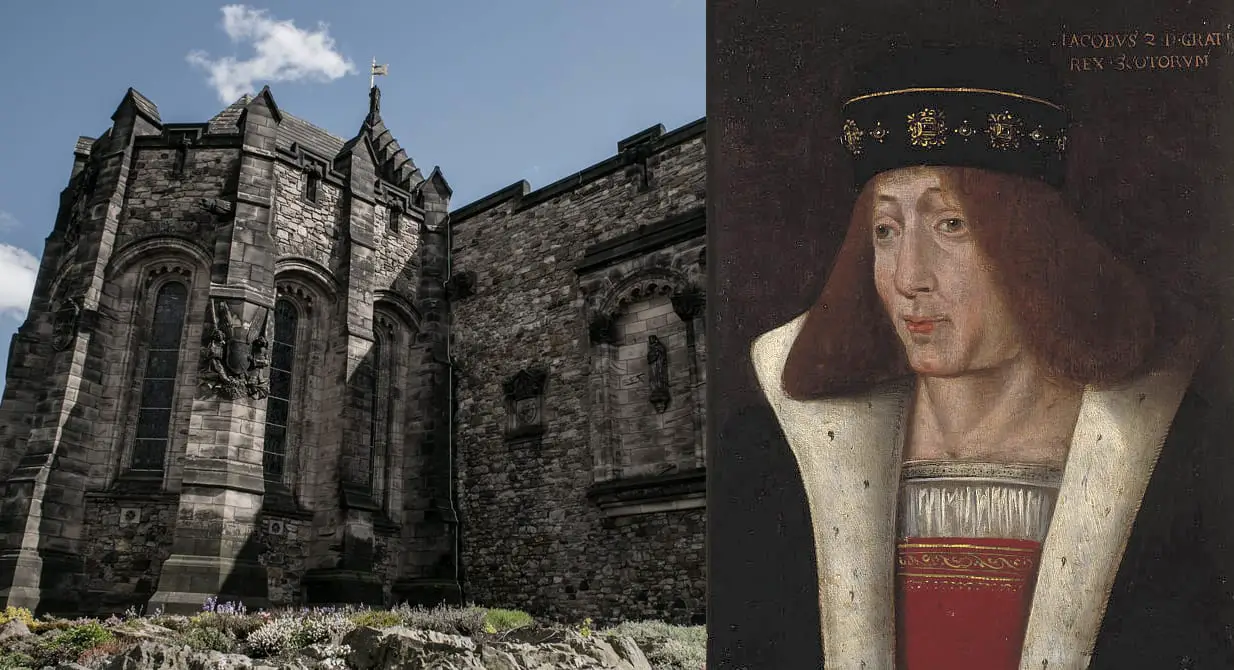The Black Dinner refers to an event in late medieval Scotland, in which the principal heads of the Douglas Clan were invited to dine with King James II, that ultimately led to them being falsely executed.
King James II (AD 1430 – 1460) of the line of Stewarts was the son of King James I and Joan Beaufort, but succeeded his father at the age of six after James I was assassinated in AD 1437 in a sewer tunnel, whilst trying to flee from Sir Robert Graham of Kinpont and a group of conspirators.
Regency over the boy king was given to Archibald Douglas, 5th Earl of Douglas, who headed the Scottish government as lieutenant-general of the realm during the minority of James until AD 1439.
After Archibald’s death, power was shared amongst William Crichton, 1st Lord Crichton and Lord Chancellor of Scotland, Sir Alexander Livingston of Callendar, and James Douglas, Earl of Avondale.
The Douglas clan were the most prominent family in lowland Scotland during the Late Middle Ages and were considered a threat to rival families, and even the throne through their influence over the crown.
In AD 1440, Crichton, Livingston, and James Douglas conspired to break the power of the late Archibald Douglas’s family and invited the 16-year-old William Douglas, 6th Earl of Douglas, and his younger brother to dine with the boy king at Edinburgh Castle.
According to legend, whilst they ate, a black bulls head was placed before William and his entourage which symbolised death. The two brothers were then dragged out to Castle Hill and given a mock trial with trumped-up charges, claiming they had protested against the king and were named as traitors to the crown and beheaded. In another account, the king pleaded for their lives, but the pleas were ignored, and they were beheaded in the castle yard.
Despite the murders, the Douglas family emerged to dominate the Scottish court and filled posts of government with their family and supporters. When James II finally came of age to rule over Scotland, he found that the Douglas clan had a monopoly over his court, and spent much of his adult life feuding with the clan.
James would repeat events of the past by inviting William Douglas, 8th Earl of Douglas to Stirling Castle in AD 1452 under the promise of safe conduct. The King then accused the Earl of conspiring to rival royal authority by forging links with John Macdonald, and Alexander Lindsay, and drew his dagger, stabbing William Douglas 26 times.
After an intermittent civil war between the crown and the Douglas clan, the Parliament of Scotland declared the Douglas lands forfeit, and permanently annexed them to the crown, along with many other lands, finances and castles.
The Black Dinner (and the Massacre of Glencoe in AD 1692) would later serve as the inspiration for “The Red Wedding” in George R. R. Martin’s A Song of Ice and Fire, and the adapted TV series, The Game of Thrones.
Header Image – James II – Image Credit : Public Domain





